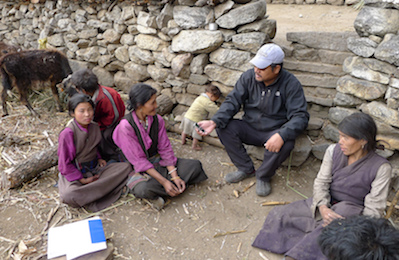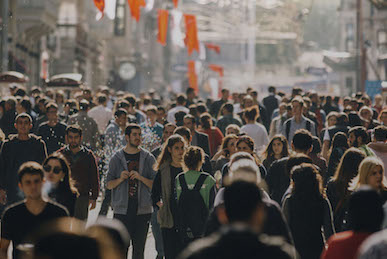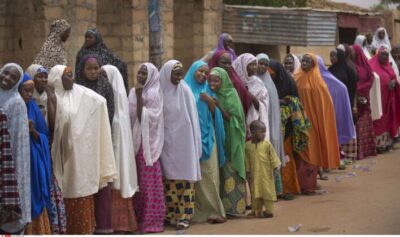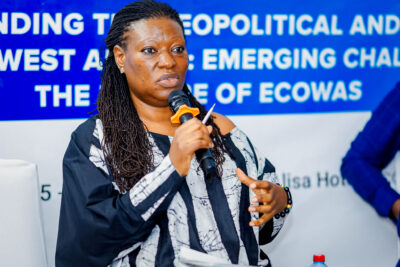The Covid-19 pandemic has disproportionately affected communities of color and is threatening to exacerbate social and economic inequality, already at unprecedented levels in the United States.
Education, which is often regarded as a vehicle to address inequality, offers a window from which to view the severity of our nation’s inequality, and the challenges and promises of democratic possibilities in the time of Covid-19.
“Beyond access, some students skip out on class meetings to avoid the shame of living in poverty.”As school systems throughout the United States have been forced to transition to remote learning in response to the pandemic, many of the veils that we rely on to hide the despair of inequality have now been lifted. While many students have been able to maintain some connection to their classrooms via online platforms like Zoom, Google Hangouts, and WebEx, and even make arguments in favor of remote learning, many less privileged students are left in the dark. Without computers and internet access, many students of lesser means are excluded from learning. Beyond access, some students skip out on class meetings to avoid the shame of living in poverty. A close friend, who is a principal at a high school in Providence, Rhode Island, told me that while some students living in poverty may have computers and internet access, the thought of having a teacher and classmates viewing the insides of their homes while on Zoom is unsettling. He also added that for many teachers, Covid-19 has forced them to confront assumptions and realities of what life is really like for their students and their families.
Removing the community from education
The right to an education for these students should be a collective concern, and ensuring that they receive an adequate education in these times requires a collective response. However, over the past three decades, a movement to make education a private, individualized endeavor has compromised the ability to create collective action at this moment. Since the 1980s, certain education reformers have advanced an agenda that has sought to separate the public schools from the mechanisms of public influence. According to these reformers, improving public education demanded a “depoliticization” of education. Locally elected school boards, teachers’ unions, and community groups were targeted as the source of the problem with public education.
One of the policies that emerged in this era of “accountability” was the state takeover of local school districts. In the 1980s, state governments began to take over school districts which they deemed as underperforming. The argument, according to state leaders and education reformers, was that local authorities in underperforming districts were failing to provide an adequate education to its students, and that the state had to step in to provide an education. State takeovers often result in the removal of the locally elected school board and superintendent. Decision-making authority over personnel, programming, budgets, and use of public buildings are also removed from the local community. Additionally, takeovers often lead to layoffs of teachers and other school and district staff.
Although the state justification is based on concerns with adequately educating children, my research shows that takeovers are about race and political power. In my book, Takeover: Race, Education, and American Democracy, I show how state takeovers have been led by Republican governors and majority-Republican state legislatures.1 Oxford University Press, 2018More Info → Most takeovers occur in Democratic cities with majority-Black student populations and Black political leadership. Furthermore, while state officials argued that communities were failing to educate their children, I show that takeovers emerged following court victories in states where communities successfully challenged unequal funding of their schools. In other words, takeovers emerged precisely at the time when communities were successful in securing greater resources for school systems that had been negligent to their Black students.
Oxford University Press, 2018More Info → Most takeovers occur in Democratic cities with majority-Black student populations and Black political leadership. Furthermore, while state officials argued that communities were failing to educate their children, I show that takeovers emerged following court victories in states where communities successfully challenged unequal funding of their schools. In other words, takeovers emerged precisely at the time when communities were successful in securing greater resources for school systems that had been negligent to their Black students.
Over the past three decades, most of the large American cities in the Northeast, the Midwest, and the South have experienced a takeover or have been threatened with one.2Cities include Baltimore, Boston, Chicago, Cleveland, Detroit, Hartford, New Orleans, New York City, Newark, Oakland, Philadelphia, Providence, St. Louis, and Washington DC. In the last five years, the states of Georgia, Mississippi, and Texas have attempted to take over the Atlanta, Jackson, and Houston school districts, respectively. Public school funding often represents the largest portion of local budgets. Further, public schools represent the space where historically marginalized communities have been able to participate in the public sphere when other avenues of political participation have been closed. This means that state takeovers of local school districts have separated communities from a primary source of their economic and political empowerment. Despite claims by state officials and reformers that takeovers will improve school systems, 30 years of evidence shows that state takeovers are more closely associated with the political disempowerment of communities than they are with the promised school improvement.3See Morel, Takeover, 3, 135–138; Mandy McLaren, “Research: Takeovers of Urban Districts like JCPS Usually Don’t Work,” Courier-Journal, May 31, 2018; Koby Levin, “Report: Michigan’s Takeover of Detroit Schools Was ‘a Costly Mistake’,” Chalkbeat Detroit, November 14, 2019.
While the reformers aimed to convince communities that removing politics from education is necessary to improve it, history informs us that for communities of color, the right to an education has always involved a collective struggle based on collective concerns. Access to education, adequate funding for low-resourced schools, Black and Latine teachers and administrators, and curricula that reflect the presence and contributions of marginalized people, among many other achievements, have been gained through collective, political, efforts.4See:
→W.E.B. Du Bois, “On the Training of Black Men,” The Atlantic Monthly, September 1902.
→James Anderson, The Education of Blacks in the South, 1860–1935 (Chapel Hill, NC: University of North Carolina Press, 1988).
→San Antonio Independent School District v. Rodriguez 411 U.S. 1 (1973).
→Abbott v Burke 100 N.J. 269 (1985).
→Elizabeth Todd-Breland, A Political Education: Black Politics and Education Reform in Chicago since the 1960s (Chapel Hill, NC: The University of North Carolina Press, 2018).
Democratic accountability in education
Although state takeovers of local school districts have had devastating political consequences for communities who are stripped of their ability to influence school policies, they represent only one form of the many ways education has been used as an instrument of disempowering communities. Scholars have also pointed to school closures, privatization, policing, and the increasing role of foundations in school governance as other contributors to the further separation of communities from the democratic means of providing an education.5→Sonya Douglass Horsford, Janelle Scott, and Gary Anderson, The Politics of Education Policy in an Era of Inequality: Possibilities for Democratic Schooling (New York: Routledge, 2019).
→Eve Ewing, Ghosts in the Schoolyard: Racism and School Closings on Chicago’s South Side (Chicago: The University of Chicago Press, 2018).
→Sally A. Nuamah, “The Paradox of Educational Attitudes: Racial Differences in Public Opinion on School Closure,” Journal of Urban Affairs 42 no. 4 (2017): 554–570.
→Sarah Reckhow, Follow the Money: How Foundation Dollars Change Public School Politics (New York: Oxford University Press, 2012).
→Noliwe Rooks, Cutting School: The Segrenomics of American Education (New York: The New Press, 2017).
→Carla Shedd, Unequal City: Race, Schools, and Perceptions of Injustice (New York: Russell Sage Foundation, 2015).
At this moment, when the pandemic has led many to call for a “reimagined” future of US education, some are relying on the same playbook of the past. New York Governor Andrew Cuomo announced a partnership with the Bill and Melinda Gates Foundation to “reimagine education” in the state. Critics have argued that Governor Cuomo’s initiative is not imaginative, since foundations have been part of US education for decades. Equally important, it is undemocratic. Kathryn Moeller and Rebecca Tarlau write that “we must be wary of foundations” which may use the Covid-19 crisis as an “excuse to radically reshape public education without public deliberation or accountability.”
Thus, rather than envisioning a renewed path of participation to transform US education and democracy, some are leaning on the same voices and perspectives of the past three decades. The same voices whose myopic view of education, centered on test scores and the erosion of public governance, has revealed their impotency in addressing enduring and emerging problems in school districts throughout the country. The exclusion of the public at this moment of crisis points to a bleak and unpromising prospect of a more equal and democratic society on the other end of the pandemic.
However, if there is a sign of democratic optimism, it has been provided by the young people of this nation. Youth activism—at the local, state, and national level—provides hope for a reimagined conception of education and democratic possibilities. Over the past five years, students have led a movement in schools, cities, and state capitols against the undemocratic practices and policies that they have had to endure but no longer accept.
Re-democratizing education
“Although this activism has been centered on school concerns, their efforts have gone beyond the schools as well.”In 2015, thousands of students in Newark, New Jersey walked out of their schools and shut down major highways in the city, demanding an end to school funding cuts and the 20-year state control of their school district. In 2018, students organized thousands of protests across the country and in Washington, DC against education budget cuts, school closings, increasing segregation of schools, unhealthy drinking water, freezing temperatures in schools, and of course, gun violence. Young people also supported their teachers, who in 2018 and 2019, mobilized in state capitals to demand more resources for public education. Although this activism has been centered on school concerns, their efforts have gone beyond the schools as well. Young people understand that many challenges they face are connected. In their view, demanding the recognition of Black lives, protecting and expanding Deferred Action for Childhood Arrivals (DACA), eradicating gun violence, advocating for LGBTQ rights, and fighting for the environment are inseparable from efforts to create “good” schools. Indeed, the protests that have swept the nation following the killing of George Floyd have been led by young people, many of which “came of age protesting gun violence, climate change, and racial injustice.”
In the weeks and months that follow, major decisions will be made that will determine the future of public education as well as many other important issues, including the economy, healthcare, policing, and elections. If the most vulnerable and marginalized members of our society are to be part of determining the future of post–Covid-19 United States, the student activism and relentless commitment to an invigorated public sphere that had been gaining momentum leading up to the Covid-19 crisis must serve as a guide out of the pandemic.
This moment is ripe for reimagining possibilities of a more equal and just society, where education, wages, healthcare, and housing are sources of human flourishing, not misery. However, imagination is not enough. Transforming imagination into reality will require the dismantling of the decades-long assault on democratic rights aimed at separating communities of color from the democratic mechanisms of political power.
References:
→W.E.B. Du Bois, “On the Training of Black Men,” The Atlantic Monthly, September 1902.
→James Anderson, The Education of Blacks in the South, 1860–1935 (Chapel Hill, NC: University of North Carolina Press, 1988).
→San Antonio Independent School District v. Rodriguez 411 U.S. 1 (1973).
→Abbott v Burke 100 N.J. 269 (1985).
→Elizabeth Todd-Breland, A Political Education: Black Politics and Education Reform in Chicago since the 1960s (Chapel Hill, NC: The University of North Carolina Press, 2018).
→Eve Ewing, Ghosts in the Schoolyard: Racism and School Closings on Chicago’s South Side (Chicago: The University of Chicago Press, 2018).
→Sally A. Nuamah, “The Paradox of Educational Attitudes: Racial Differences in Public Opinion on School Closure,” Journal of Urban Affairs 42 no. 4 (2017): 554–570.
→Sarah Reckhow, Follow the Money: How Foundation Dollars Change Public School Politics (New York: Oxford University Press, 2012).
→Noliwe Rooks, Cutting School: The Segrenomics of American Education (New York: The New Press, 2017).
→Carla Shedd, Unequal City: Race, Schools, and Perceptions of Injustice (New York: Russell Sage Foundation, 2015).












